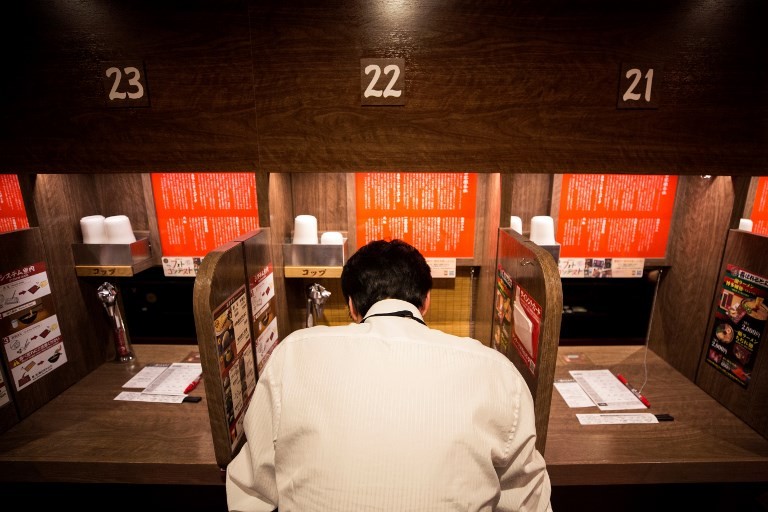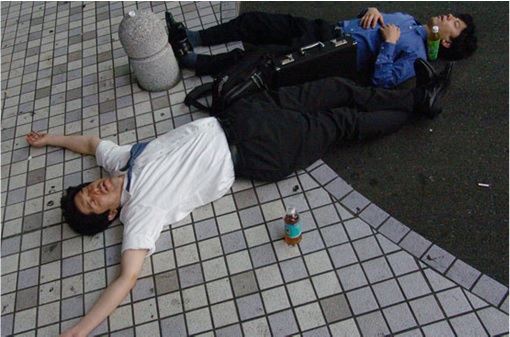Introduction: Shibuya Meltdown
When the sun sets in Tokyo, the bustling district of Shibuya transforms into a vibrant hub of nightlife. Amid the neon lights and throngs of people, a curious sight can often be seen: salarymen, still in their business suits, sprawled out on benches, curbs, or even the ground, passed out from a night of heavy drinking. This phenomenon, commonly referred to as “Shibuya Meltdown,” is a unique aspect of Japanese urban culture. It raises intriguing questions about the social dynamics, work culture, and safety of Japan.
The Salaryman Culture in Japan
To understand Shibuya Meltdown, we first need to delve into the culture of the Japanese salaryman. Salarymen are white-collar workers who dedicate their lives to their companies. They work long hours, often extending late into the night. The dedication to their jobs is immense, with a strong emphasis on loyalty and hard work. This lifestyle comes with significant pressure to succeed and meet high expectations. Alcohol plays a pivotal role in Japanese business culture. After long workdays, it’s common for salarymen to engage in “nomikai,” or drinking parties, with colleagues and superiors. These gatherings are seen as extensions of the workplace, providing a space for bonding, discussing work matters informally, and breaking down hierarchical barriers. Participation is often viewed as an unspoken requirement, fostering camaraderie and solidarity within the team.
The Reality of Shibuya Meltdown
As the night progresses, the effects of alcohol become evident. Salarymen, overwhelmed by exhaustion and intoxication, often find themselves unable to make it home. It’s not unusual to see them sleeping on benches, against buildings, or even directly on the sidewalk. This sight, though surprising to outsiders, is a well-accepted part of urban life in Japan. Shibuya Meltdown is not limited to Shibuya. Similar scenes can be found in other busy districts like Shinjuku, Roppongi, and Ginza. The term, however, has become synonymous with Shibuya due to its popularity and the high number of visible cases.

The Safety Factor
One of the most striking aspects of Shibuya Meltdown is the apparent safety of the situation. Japan boasts one of the lowest crime rates in the world. The sight of individuals sleeping in vulnerable positions without fear of harm highlights the level of safety in Japanese cities. This contrasts sharply with many other countries where such behavior could lead to robbery, assault, or worse. In Japan, public drunkenness, especially among salarymen, is generally tolerated. It’s seen as a byproduct of hard work and the pressures of maintaining one’s career. While the sight of a passed-out salaryman might raise eyebrows, it’s usually met with understanding rather than judgment. This tolerance stems from a cultural understanding of the demands placed on these workers and the role of alcohol as a coping mechanism.
The Impact on Health and Well-being
Despite the social acceptance, the phenomenon does raise concerns about the health and well-being of salarymen. The combination of long working hours, high stress, and frequent heavy drinking can have serious health implications. Issues like liver disease, alcohol dependency, and mental health problems are significant risks. The physical toll of such a lifestyle is evident in the exhaustion that leads to Shibuya Meltdown. Recognizing the potential dangers, there have been some efforts to address the culture of excessive drinking. Companies are starting to promote healthier work-life balances and are encouraging moderation. Additionally, there is a growing awareness of the importance of mental health and the need for support systems within the workplace. However, change is slow, and the deeply ingrained cultural practices are not easily altered.

Shibuya Meltdown in the Age of Social Media
The phenomenon of Shibuya Meltdown has gained international attention, particularly through social media. Images of passed-out salarymen often go viral, sparking discussions about Japanese work culture and societal norms. While some see it as a humorous or bewildering spectacle, others view it as a poignant illustration of the pressures faced by Japanese workers. Shibuya Meltdown offers a unique window into Japanese society. It reflects the intense dedication and hard work expected of salarymen, the role of alcohol in social and business interactions, and the remarkable safety of Japanese cities. It also highlights the cultural tolerance for public drunkenness and the underlying issues related to work stress and health.
Conclusion: A Complex Cultural Phenomenon
Shibuya Meltdown is more than just a quirky urban spectacle. It’s a complex cultural phenomenon that speaks volumes about the pressures of modern Japanese life, the social dynamics of the workplace, and the unique aspects of Japanese safety and public behavior. While the sight of salarymen sleeping off their drinks in the streets may be surprising or amusing to some, it also serves as a reminder of the sacrifices and challenges faced by these workers.For visitors to Japan, witnessing Shibuya Meltdown can be a fascinating glimpse into a different way of life. It’s an opportunity to reflect on the cultural differences and similarities between Japan and other parts of the world. And for those living in Japan, it’s a part of the urban landscape that underscores the importance of compassion and understanding in the face of societal pressures.
























